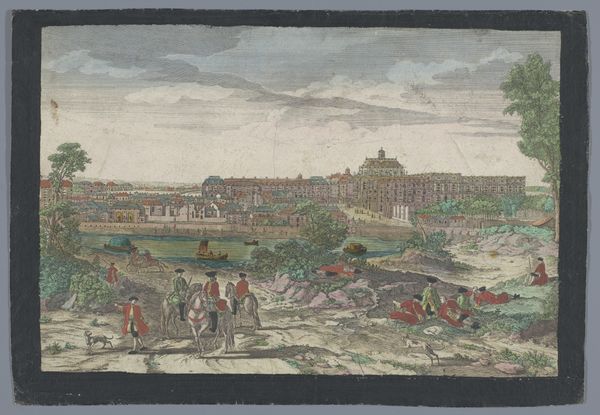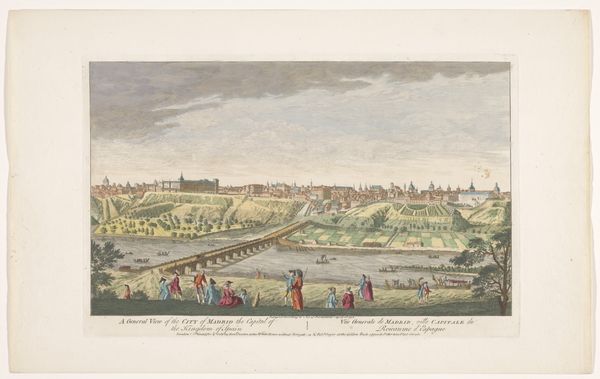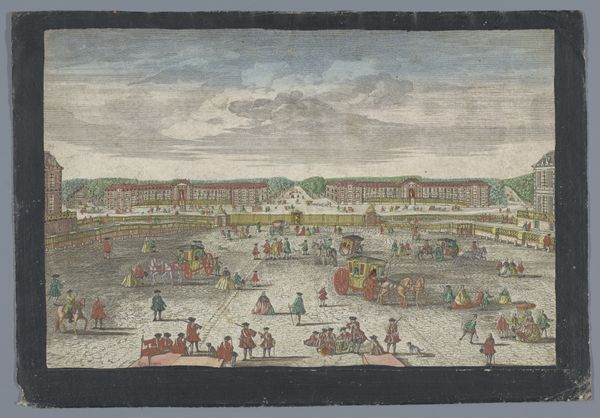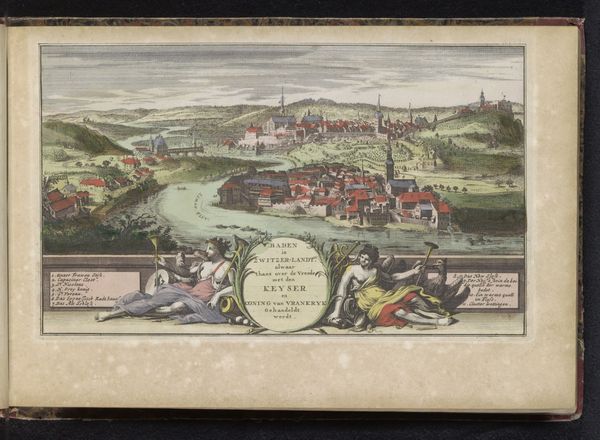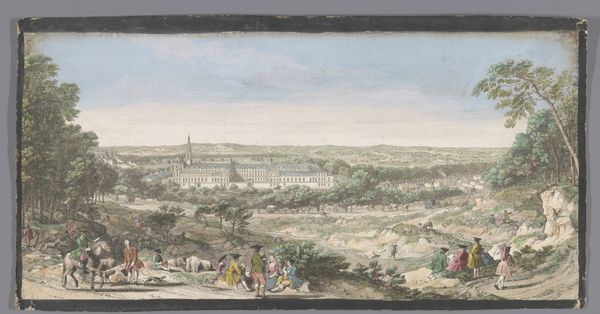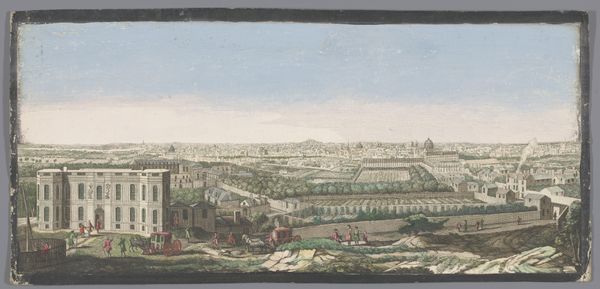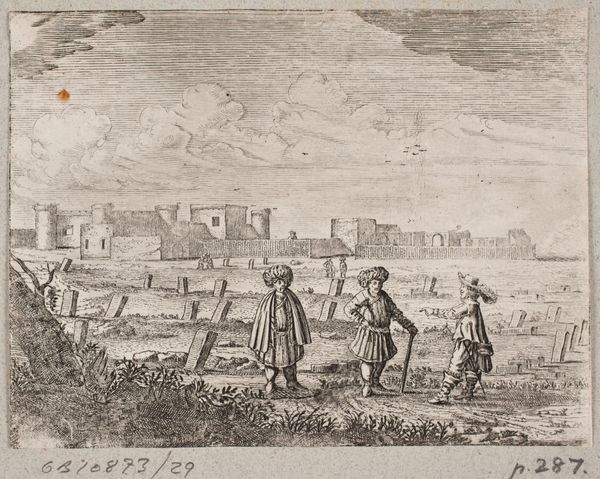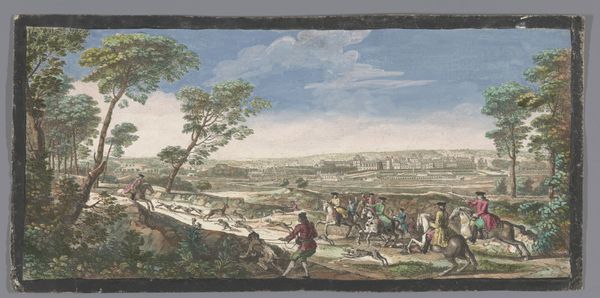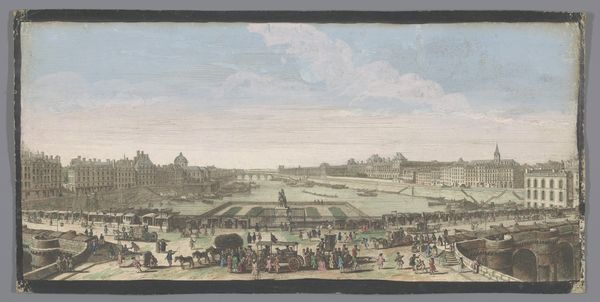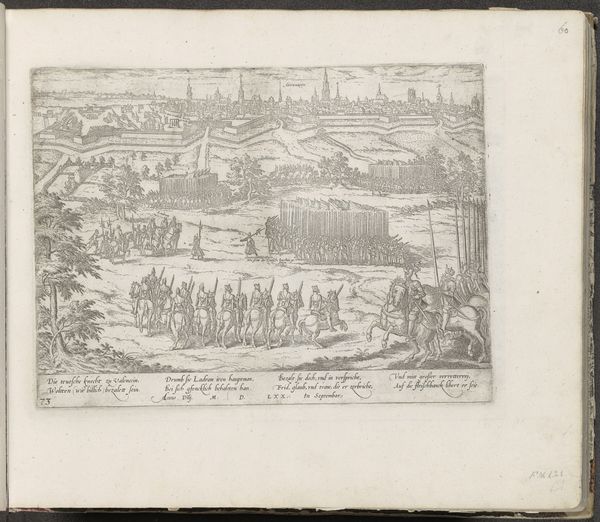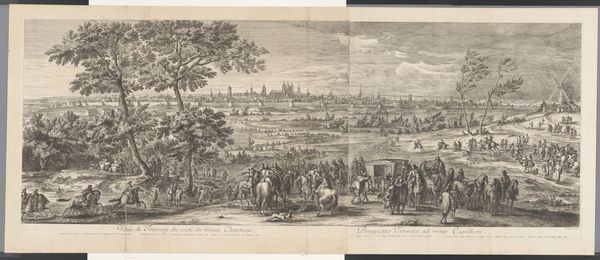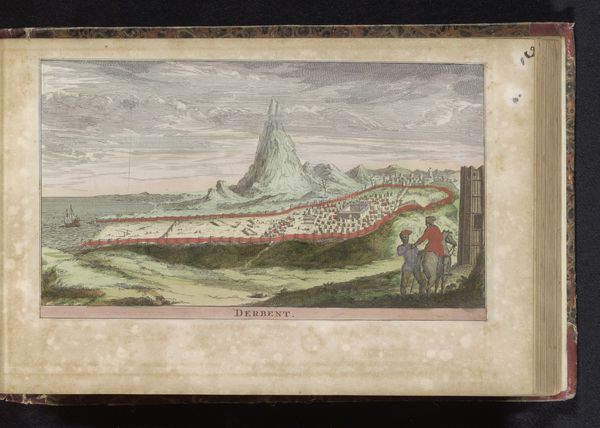
painting, print, watercolor
#
baroque
#
ink painting
#
painting
# print
#
landscape
#
watercolor
#
coloured pencil
#
history-painting
#
watercolor
Dimensions: height 168 mm, width 278 mm
Copyright: Rijks Museum: Open Domain
Curator: Here we have "Beleg van Verua, ca. 1702", made around 1735 by an anonymous artist. It seems to be a watercolor print. What are your initial thoughts? Editor: It’s… interesting. At first glance, it feels a little naïve, but the composition is really quite dynamic. There’s something almost theatrical about the way the figures are arranged in the foreground against that slightly faded depiction of the city. Curator: Yes, "naive" is one word for it! It's fascinating how the artist used watercolor over the print, it almost softens the typical sharp lines you would find on this type of artwork. Look how that contrasts with the graphic, almost diagrammatic rendering of the siege itself, and the repetition of forms…it almost suggests mass production and military strategy are deeply intertwined. Editor: Precisely. And thinking about that social and historical context - this depicts a military siege. Sieges meant disruption, displacement, trauma... looking closely, you can almost feel that underlying anxiety through the figures and details that maybe wouldn't be apparent if we were just casually admiring the scene. Who do you think made this? And for whom? Curator: Given the details in the composition I wouldn’t be surprised if this work was commissioned by a member of the military or someone connected to the event depicted. Watercolors were often used to quickly create prints or duplicates of paintings during the baroque period, that way it was faster and cheaper for propaganda purposes. This piece could be an early form of mass communication or political commentary? Editor: That's interesting. When you see the hand-colouring, does that connect to any craft or labor at the time, do you think? It would not be painted on location... so where does it take its authority from? Also, look at how the city itself is almost idealized; does the artistic choice reveal any deeper themes, perhaps relating to the politics of power or justification for military action? Curator: I see what you're getting at; while the print provides a structural framework rooted in process, its hand-painted augmentation elevates the entire object out of something simple and turns it into propaganda, therefore complicating a straight historical or literal interpretation. Editor: Ultimately, through its composition, the materials it uses, and what we can research on its moment in time, this artwork encourages a closer, perhaps more critical, dialogue about power, representation, and history itself. Curator: Exactly, it's not just about pretty landscapes or perfect watercolor skills—it's a reflection of complex historical, social, and material forces.
Comments
No comments
Be the first to comment and join the conversation on the ultimate creative platform.
